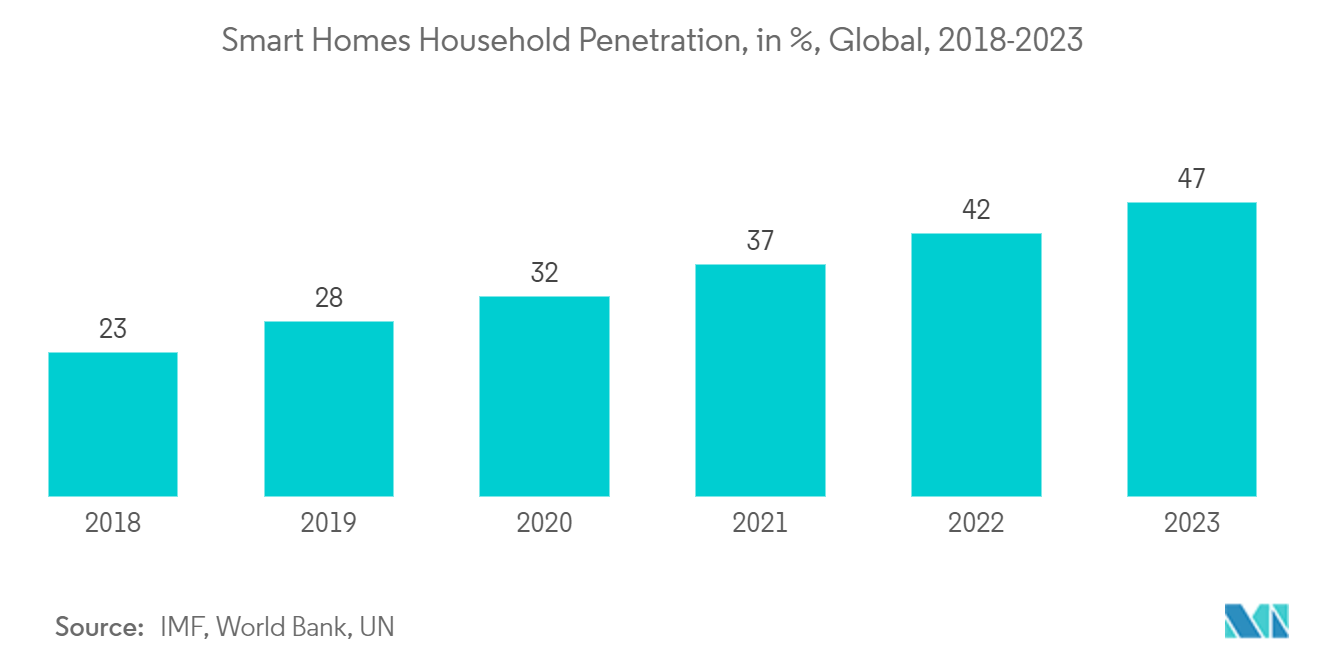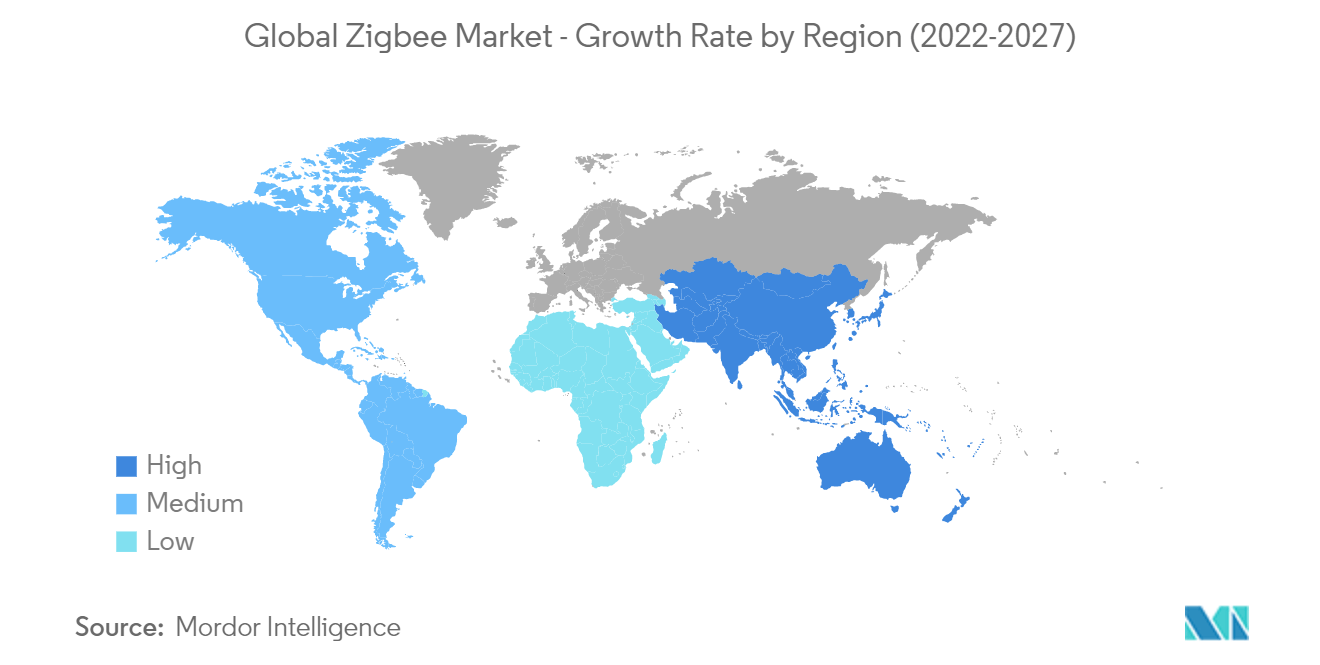Market Trends of ZigBee Industry
This section covers the major market trends shaping the ZigBee Market according to our research experts:
Smart Homes & Building Sector is Gaining Traction Due to Emergence of Automation
- ZigBee network is primarily intended for low-duty cycle sensors, those active for less than 1% of the time. It is an IEEE 802.15.4-based suite for high-level communication across the smart home ecosystem due to its proximity, low data rate, and low power system features.
- Zigbee uses a variety of information transfer mechanisms, such as direct, group, and broadcasting addresses. Mesh network in this internet protocol can be established, which enables the long-distance communication of information across the building automation sector.
- Increasing investments in start-ups such as Hypervolt, HIXAA, SmartRent, and other SMEs help to gain new IoT-based projects in industries that are likely to create a need for a high-performance, low-power IoT MCUs market over the forecast period.
- For instance, in 2022, Renesas Electric Corporation introduced the 32-bit RA Family of microcontrollers (MCUs). The new product is based on the Arm Cortex-M23 core, which provides shallow power consumer MCUs explicitly designed for IoT endpoint applications such as industrial automation, medical devices, intelligent home appliances, and wearables.
- Further, with the increasing investments and adoption of innovative home technologies, consumers start to perceive products, such as voice-activated assistants and smart security systems, as standard household items rather than redundant luxuries, thereby driving the application of the Zigbee communication product integrated across the end-user industry.

North America to Account for the Most Significant Share in the Market
- Smart homes are on the rise across North America, where people in the region are increasingly looking to automate their homes. Dependence on smartphones and mobile apps is set to increase as smartphones offer an attractive and intuitive window into controlling smart home technology.
- For instance, in October 2021, The United States Department of Energy (DOE) announced $61 million in funding for ten pilot projects using new technology to transform thousands of homes and workplaces into cutting-edge, energy-efficient structures. These Connected Communities can interact with the electrical grid to optimize their energy consumption, significantly reducing carbon emissions and energy costs. Which further increases market growth.
- With nearly 30 million U.S. households projected to add smart home technology, the products consumers want to add to their homes include connected cameras, video doorbells, connected light bulbs, smart locks, and smart speakers that find the application of Zigbee standards for their communication medium.
- Also, the adoption of voice-powered smart speakers is taking off, with an estimate of smart devices such as the Amazon Echo, Google Home, and Sonos One that will be installed in most U.S. households, thereby driving the application of the Zigbee connectivity medium during the forecast period.
- According to a recent Stanford University and Avast study, North American homes have the highest density of IoT devices of any region in the world. Notably, 66% of homes in the region have at least one IoT device. Additionally, 25% of North American homes boast more than two devices. Due to robust cloud infrastructure, an increasing number of connected devices, and advancements in artificial intelligence and machine learning technologies in the region, the market for ZigBee is expected to grow.
- The average household in the region would have an average of nine devices by 2022, and nearly half (48%) of total devices and connections will be video capable. Hence, with the growing adoption of IoT devices, the demand for ZigBee chips is expected to increase for these smart home devices over the forecast period.


